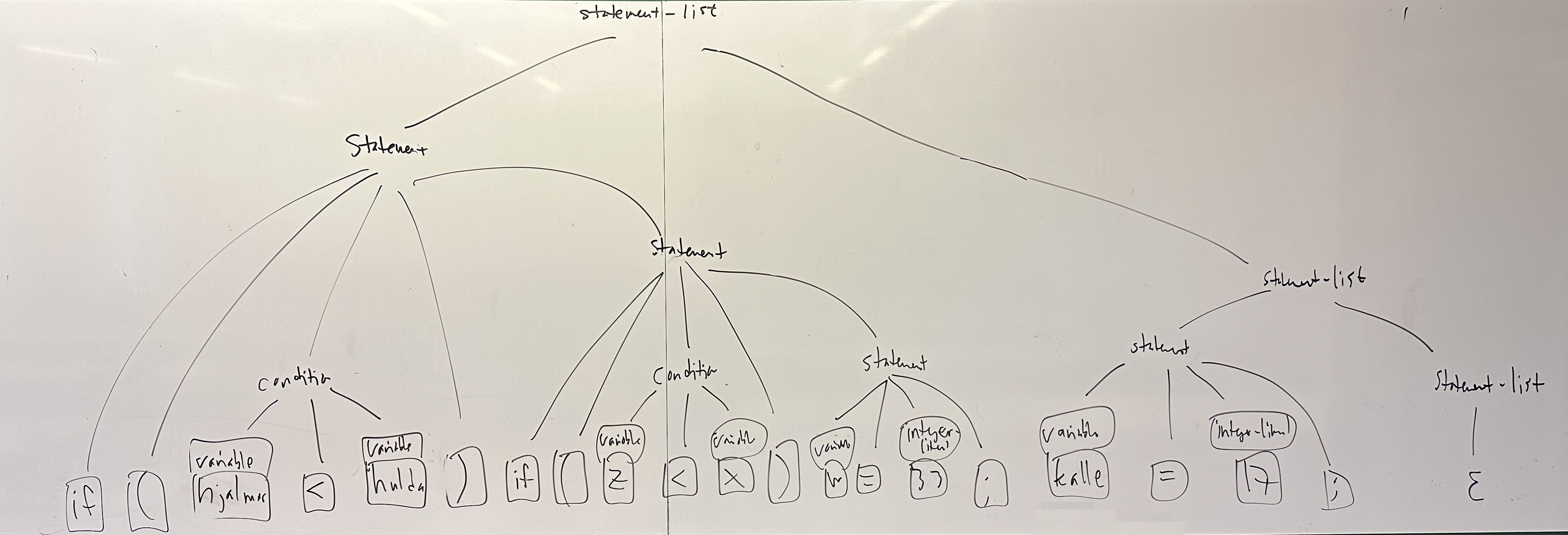
good morning good day good evening good good
good morning good day good evening good good good morning good morning good morning good day good morning good evening good morning good good good day good morning good day good day good day good evening good day good good good evening good morning good evening good day good evening good evening good evening good good good good good morning good good good day good good good evening good good good good good morning good morning good morning ...
b) Names are important in grammars, just as in programming. Programming is a form of communication, not with the computer but with other humans who will read your program, and you should help them understand the program. One part of that is to chose good names for variables and other things.
Christmas!
Done!
Glad
Merry
Midsommar!
Påsk!
Trevlig
or perhaps these nine:
Christmas
Done
Glad
Merry
Midsommar
Påsk
Trevlig
Exclamation-mark
Newline
Deriving this token sequence from the start symbol statement-list, using the productions in the grammar. That a terminal is underlined just means that it will be expanded in the next step. We have always expanded the leftmost non-terminal, but that is not necessary. In the final step, we use the production statement-list -> empty.
statement-list
statement statement-list
if ( condition ) statement statement-list
if ( variable < variable ) statement statement-list
if ( variable < variable ) if ( condition ) statement statement-list
if ( variable < variable ) if ( variable < variable ) statement statement-list
if ( variable < variable ) if ( variable < variable ) variable = integer-literal ; statement-list
if ( variable < variable ) if ( variable < variable ) variable = integer-literal ; statement statement-list
if ( variable < variable ) if ( variable < variable ) variable = integer-literal ; variable = integer-literal ; statement-list
if ( variable < variable ) if ( variable < variable ) variable = integer-literal ; variable = integer-literal ;
Another way to show the derivation is as this tree:
